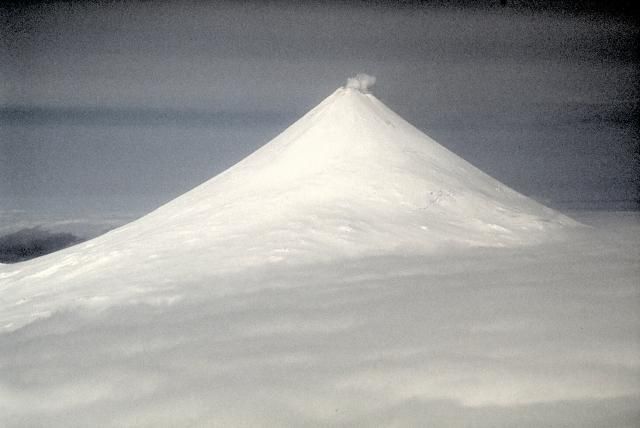Shishaldin (United States)
Status Unrest Eruption 2015 2857m
Stratovolcano (Subduction zone / Continental crust (> 25 km))

The beautifully symmetrical volcano of Shishaldin is the highest and one of the most active volcanoes of the Aleutian Islands. The 2857-m-high, glacier-covered volcano is the westernmost of three large stratovolcanoes along an E-W line in the eastern half of Unimak Island. The Aleuts named the volcano Sisquk, meaning "mountain which points the way when I am lost." A steady steam plume rises from its small summit crater. Constructed atop an older glacially dissected volcano, it is Holocene in age and largely basaltic in composition. Remnants of an older ancestral volcano are exposed on the west and NE sides at 1500-1800 m elevation. There are over two dozen pyroclastic cones on its NW flank, which is blanketed by massive aa lava flows. Frequent explosive activity, primarily consisting of strombolian ash eruptions from the small summit crater, but sometimes producing lava flows, has been recorded since the 18th century.
Often compared to Mount Fuji of Japan, the symmetrical Shishaldin volcano, located on central Unimak Island in the Aleutians, rises 2857 m above sea level. The volcano has a summit crater that emits a nearly continuous plume of steam. Shishaldin is the highest and one of the most active volcanoes of the Aleutian Islands. It has produced frequent strombolian eruptions, sometimes with lava flows, since the 18th century.
Photo by Chris Nye (Alaska Division of Geological & Geophysical Surveys, Alaska Volcano Observatory).
Last updated 2023-11-19 01:28:33

